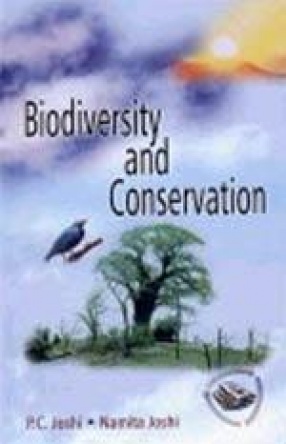Biodiversity and Conservation
Synopsis
The concept, knowledge and mass awareness about our biological diversity is one of the most talked about subject of 21 century. Obviously because human survival is directly linked to its ambient biological diversity of kaleidoscopic nature. As a result imparting knowledge to our future generation, on this subject has become most essential for the sake of posterity. However, the subject is vast like an ocean, embracing vast array of floral and faunal diversity including the microorganisms present over the planet earth. The conservation of this entire spectrum of diversity is vitally essential for maintaining the ecological balance of the environment as well as for the survival of the most intelligent species on the earth, the Homo sapience, who is but solely responsible for the pathetic condition of our natural resources. This book is a humble step to bring a specific knowledge at the doorstep of students, researchers and specialists about some selected aspects related to biological diversity--to begin with. The book biodiversity and conservation has nine chapters, dealing with general to specific aspects of the discipline in its own way. Chapter one covers the various definitions, extent, value and causes of loss of biological diversity at local, national and global levels. Chapter two deals with the status of biodiversity in India, the biodiversity act, 2002 of India and the follow up actions after Rio summit. It also gives a list of various central acts wherein some provisions are there for conserving diversity. Chapter three is about the forest wealth of India, causes of forest degradation, and forest conservation methods. Similarly chapter four is about the wildlife in India covering the species included in the various schedules of wild life (protection) act, 1972, taxidermy rules, various schemes launched by the Government of India to conserve our wildlife, a list of biosphere reserves in India and brief description of ecotourism. Chapter five and six include detailed case studies of insect diversity in a moist deciduous and high altitude forests in Western Himalayas, respectively. These also discuss the impact of vegetation, disturbances and other climatic factors on the life cycle and energetic of insects. Chapter seven gives detailed information on the aquatic resources and fish diversity in Western Himalayas. Chapter eight gives details of avian and mammal diversity of western Himalayas. Chapter nine deals with convention on biological diversity, conference of parties and future perception of biodiversity. It is hoped that this book will serve the purpose of students whose curricula include biodiversity and its conservation, teachers, researchers and, will spread awareness of serious concern, among all the readers towards conservation of our valuable resources, which mother nature has bestowed upon the plant earth.
Read more
57.60
51.84
$
64.00 $
Free delivery Wolrdwidе in 10-18 days
Ships in 1-2 days from New Delhi
Membership for 1 Year $35.00
Get it now and save 10%
Get it now and save 10%
BECOME A MEMBER











Bibliographic information
Namita Joshi